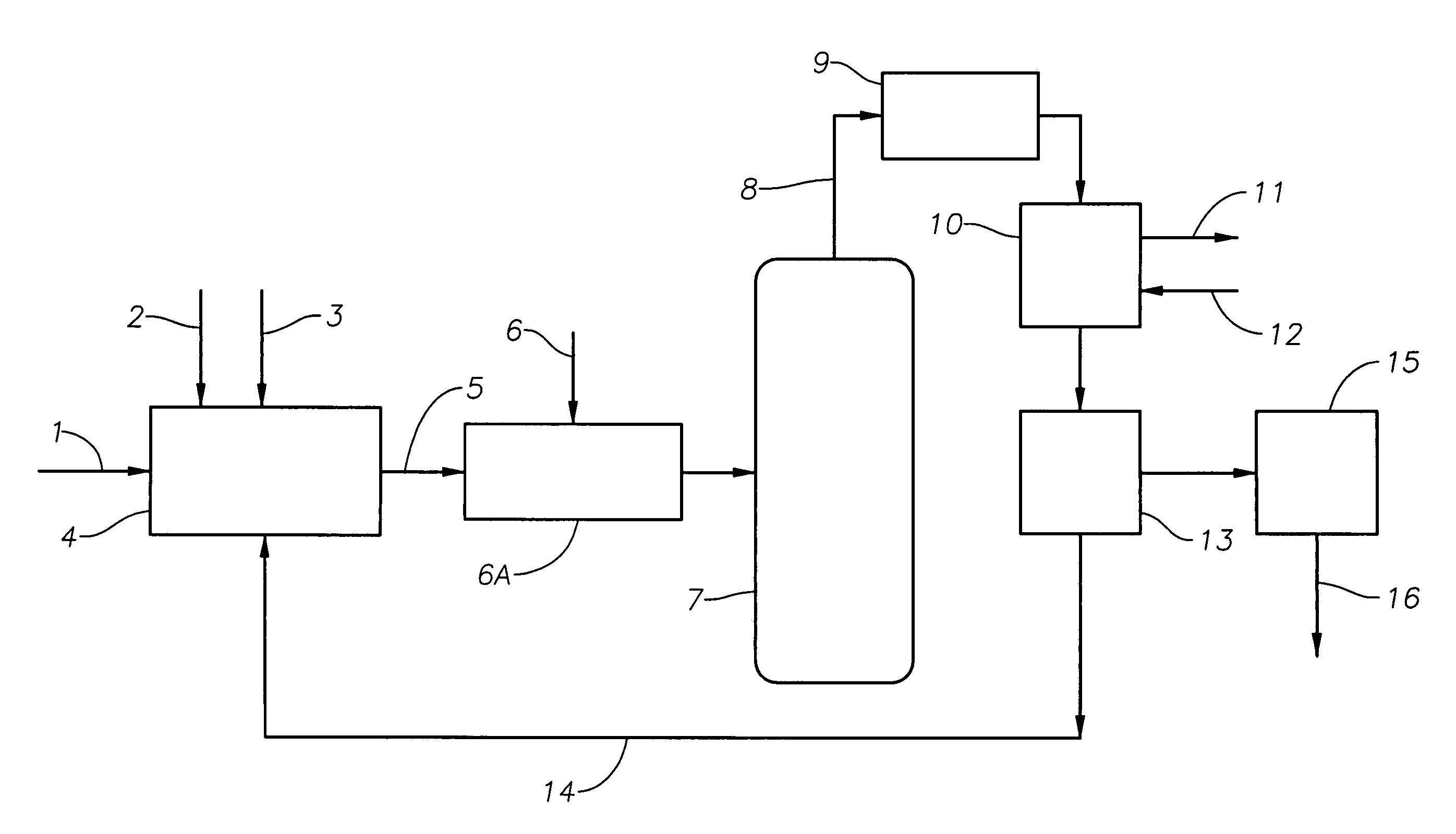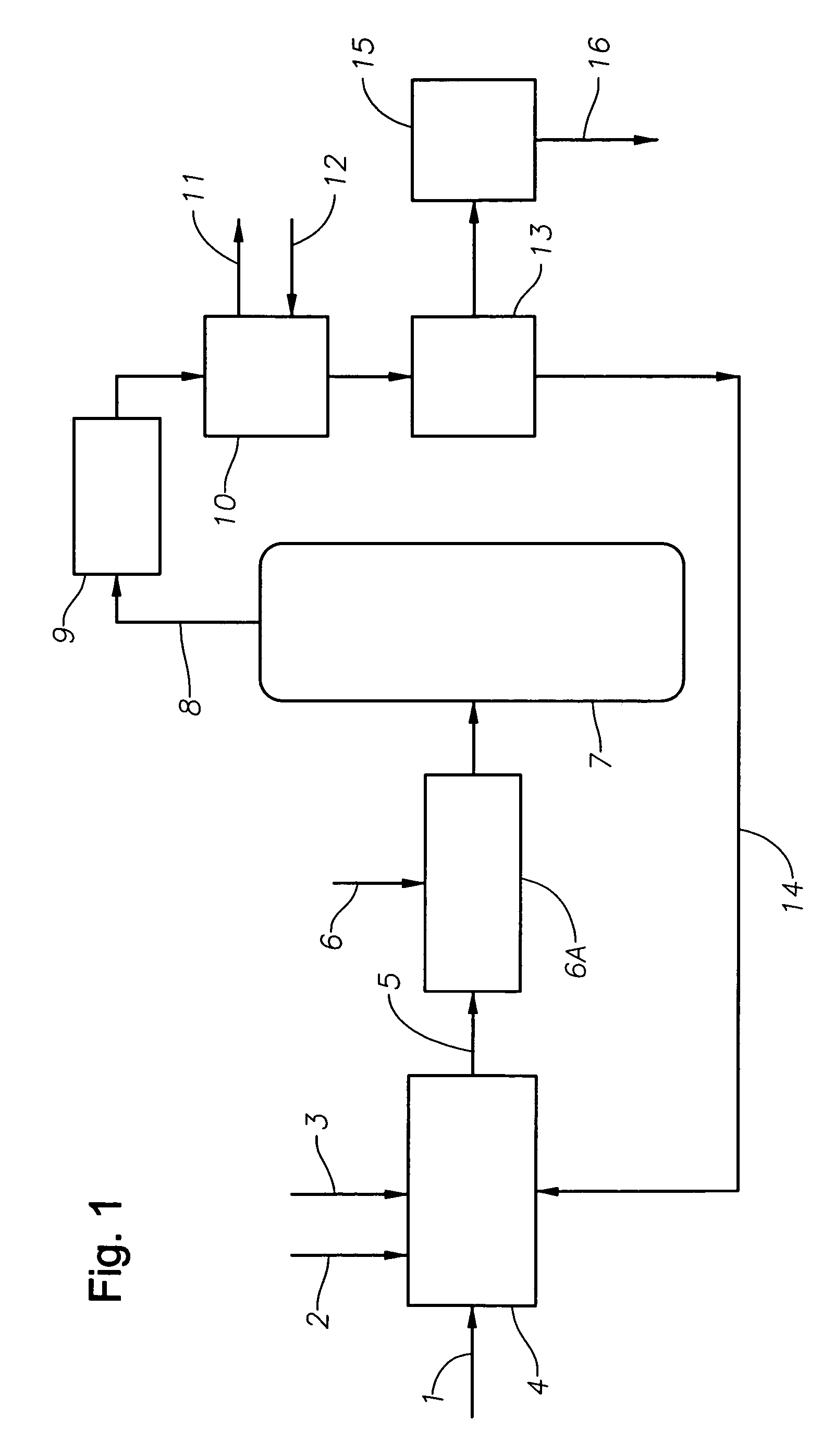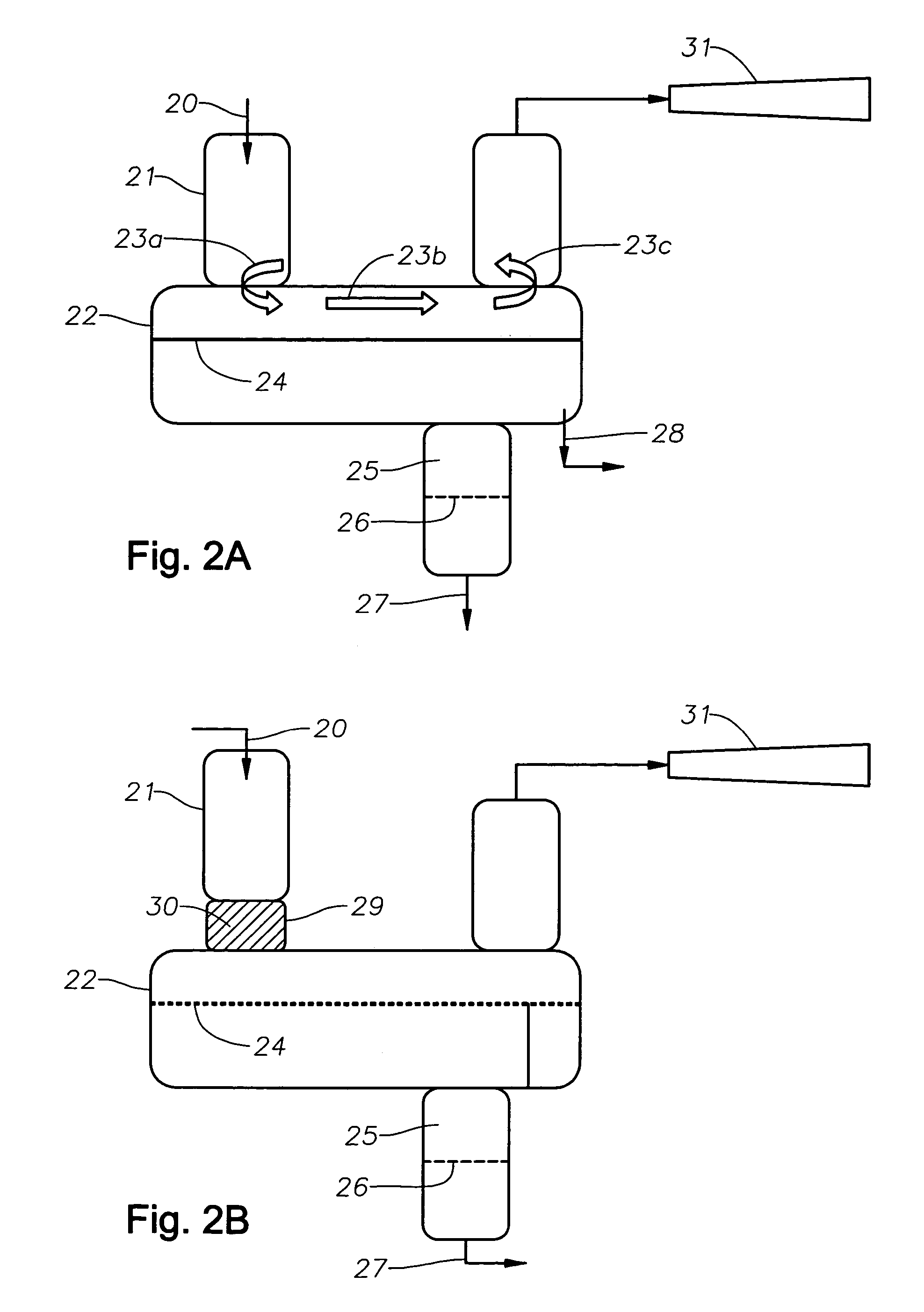Catalyst recovery process
a catalyst and recovery process technology, applied in the field of catalyst recovery process, can solve the problems of unrecycled boron trifluoride, boron trifluoride is eventually lost to the effluent system, and boron trifluoride is not recycled, so as to reduce the use of boron trifluoride and boron trifluoride emissions, reduce vacuum and heat-induced degradation, and efficiently recombine
- Summary
- Abstract
- Description
- Claims
- Application Information
AI Technical Summary
Benefits of technology
Problems solved by technology
Method used
Image
Examples
example 1
[0042]A reaction mixture comprising about 10 weight % methyl alcohol, about 23 weight % boron trifluoride and about 67 weight % decene was distilled in a laboratory vacuum distillation column at a pot bottoms pressure of 10 mm Hg and temperature of 220° C. The overheads from this distillation column were condensed in a condenser with cooling water temperature of about 30° C. The recovered boron trifluoride-organic catalyst condensed from the distillation column overheads was about 88 mole % saturated. About 9% of the boron trifluoride dissociated during the distillation was not recovered as evidenced by loss of boron trifluoride through the vacuum system.
example 2
[0043]A reaction mixture comprising about 4.7 weight % butyl alcohol, about 2.5 weight % butyl acetate, about 5.8 weight % boron trifluoride and about 87 weight % decene was distilled in a laboratory vacuum distillation column, as described in Example 1, at a pot bottoms pressure of 10 mm Hg and temperature of 220° C. The overheads from this distillation column were condensed in a condenser with cooling water temperature of about 20° C. The boron trifluoride-organic catalyst condensed from the distillation column overheads was about 78 mole % saturated. About 12 mole % of the boron trifluoride dissociated during the distillation was not recovered as evidenced by loss of boron trifluoride through the vacuum system.
example 3
[0044]A reaction mixture comprising about 7 weight % butyl alcohol, about 5 weight % butyl acetate, about 9 weight % boron trifluoride and about 79 weight % decene was combined in a laboratory reactor at a system pressure of 2 mm Hg and temperature of about 220° C. The gas vapors from this reactor were condensed in a condenser, as described in Example 1, with the cooling water temperature of about 20° C. Without subjecting the vapors to efficient mixing, i.e, conventional condenser without a structured packing material, the condensed boron trifluoride-butyl alcohol / butyl acetate catalyst was about 65 mole % saturated. About 29 mole % of the boron trifluoride initially present in the reactor dissociates and was not recovered as evidenced by the boron trifluoride lost through the vacuum system.
[0045]The same gas vapors when allowed to come into contact via packed elements and baffles resulted in condensed boron trifluoride-butyl alcoholibutyl acetate catalyst that was about 85 mole % ...
PUM
| Property | Measurement | Unit |
|---|---|---|
| temperature | aaaaa | aaaaa |
| kinematic viscosity | aaaaa | aaaaa |
| pressure | aaaaa | aaaaa |
Abstract
Description
Claims
Application Information
 Login to View More
Login to View More - R&D
- Intellectual Property
- Life Sciences
- Materials
- Tech Scout
- Unparalleled Data Quality
- Higher Quality Content
- 60% Fewer Hallucinations
Browse by: Latest US Patents, China's latest patents, Technical Efficacy Thesaurus, Application Domain, Technology Topic, Popular Technical Reports.
© 2025 PatSnap. All rights reserved.Legal|Privacy policy|Modern Slavery Act Transparency Statement|Sitemap|About US| Contact US: help@patsnap.com



